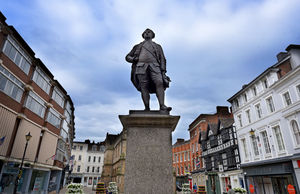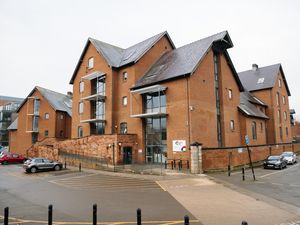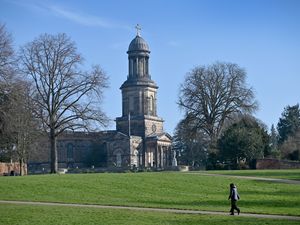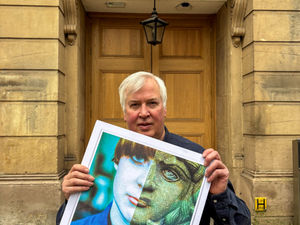More than 2,200 sign rival petition to keep Clive of India statue in Shrewsbury
A new petition has been launched for the statue of Clive of India to remain in Shrewsbury.

More than 10,000 people have signed petitions to have the sculpture of Robert Clive, who became wealthy from establishing British power in parts of India, removed from The Square.
But a rival petition to keep the monument has now been set up, and has received more than 2,200 signatures.
Vote in our poll:
The petition was set up by Emma Dolphin, who said: "Removing statues does not change history nor help us learn from it.
"Shrewsbury and Shropshire has been influenced by the actions of Robert Clive whether we condone all of his actions or not.
See also:
"Leave the statue where it is and don’t erase history. Or is it burning books next?"
Former British Infantry officer John O'Brien MBE, who is from Shrewsbury, backed the petition and said: "I suspect some of my friends where I live and indeed in London may disagree, but I really do hope that Clive of India is not removed from Shrewsbury square.
"Statues can teach us about history and context. They do not convey an immutable truth but are symbolic of society at a particular point in time.
"To me the statue is no longer the glorification of him, or his activities, but is part of our built heritage.
"Yes, let's present an exhibition in the museum perhaps, or put a balanced plaque on the mount, but don't remove him from his context."
He added: "I want all of us and future generations to be capable of making informed opinions on our history by living amongst it.
"Whatever our moral and ethical perspective now, what happened years ago cannot simply be eradicated by removing statues."
Pressure is increasing for statues associated with slavery to be torn down in the UK. The statue of slave trader Edward Colston was taken down in Bristol and rolled into a harbour by protesters at the weekend. The statue of Robert Milligan, another slave trader, was removed from the outside of the Museum of London Docklands yesterday, while students were also protesting in Oxford to remove statues.
Shropshire Council has said it will debate the issue of the Robert Clive statue at its next full council meeting.
To view the petition to keep the statue visit change.org/p/shrewsbury-town-council-residents-of-shrewsbury-and-shropshire-keep-the-robert-clive-statue-in-shrewsbury.
In brief: Who was Robert Clive?
Clive was born on the Styche Hall estate, near Market Drayton, in 1725 and went to school in London before travelling to India with the East India Company in 1743.
After two years in Britain, in 1755 Clive returned to India and two years later retook Calcutta (now Kolkata) for the company at the Battle of Plassey, a key moment on Britain's path to controlling Bengal and then India for almost two centuries.
Corruption and looting saw Clive amass a huge amount of wealth and he returned to Britain in 1760, aged 34.
He was made Baron Clive of Passey, knighted and became Shrewsbury's MP, a position he held until his death.
He went back to India in 1765 for two years before returning to Britain where the activities of Clive and the East India Company in India came under sustained attack.
The famine of Bengal that lasted between 1769 and 1773 and killed around a third of the region's population was said to have largely been caused by the company's policies.
Clive defended himself in Parliament, saying "I stand astonished at my own moderation," and in 1773 Parliament declared that he did “render great and meritorious services to his country.”
He died at home in London aged 49 and is believed to have killed himself.
All the petitions can be found by searching ‘Clive of India’ on change.org.





